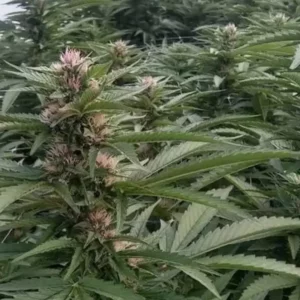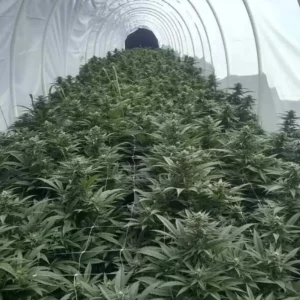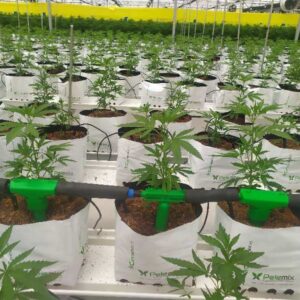Cannabis Crop Case Studies
OptiCrop RZTO technology increased dry weight yield between 40-270% in Cannabis across 11 different strains in open fields and greenhouses!
One of the most often overlooked elements in Cannabis and general agricultural growing is root zone temperatures. Besides water it’s the second most influential parameter for successful growing and high yield.
 Regulating plant temperature
Regulating plant temperature
Due to air and soil temperature fluctuations root systems cannot maintain optimum temperatures year-round. Once the growing medium’s temperature goes outside of the optimal root zone temperature range, it can no longer supply the rest of the plant with the optimum levels of water and nutrients. This is the case whether the root zone temperature is too high or too low. The greater the temperature fluctuation is in a 24 hour period, the greater the likelihood the root system will be stressed and the more it will become increasingly susceptible to pathogens, insects and lower yields.
OptiCrop have the tested solution. The system maintains an optimum range of root zone temperature year-round.
Benefits:
- Increased yield
- Shortened growing cycles
- Reduced disease load
- Higher THC in some strains
- Planting off season (early or late)
- Significant energy savings compared with air management options
- Can substitute air management equipment in some locations
- Quick Return on investment
- Real time temperature input of roots and air
 The Importance of Creating a Healthy Root Zone for Cannabis
The Importance of Creating a Healthy Root Zone for Cannabis
Root zone management is a crucial aspect of cannabis cultivation – the roots are the primary route for essential water and nutrients to reach plant tissues.
The root system will develop and function best when kept within a specific temperature range (usually between 70 and 78 F, 18-25 C). A master grower should monitor RZT closely, just as he/she needs to monitor and regulate air temperatures. All parts of the plant are interconnected, and nutrient absorbtion issues can occur in properly fed plants if the root zone temperatures stray outside the correct temperature range for too long.
Without a healthy root system, your cannabis plants can never reach their full potential. For a heavy harvest full of spectacular buds, you’ll want to do everything you can to support the health of your plants’ roots.
Cannabis roots are happiest at around 24°C, (76F) respiring and growing most during the night and early morning hours.
The roots of a cannabis plant are responsible for taking up the nutrients, water, and oxygen your plants need to grow. To help your plants grow as healthy as possible and produce the best possible flowers, you must help each plant develop a strong root network early on to fuel bud production later.
Cannabis growing problems
Below are some of the most common cannabis roots problems caused due to excessively hot or cold temperature in the plants’ root zone:
- Root Rot – When it comes to identifying root rot, we recommend looking at the plants. Plants with root rot can’t absorb moisture and nourishment from the soil properly. The plants often resemble those suffering from drought and stress, and mineral deficiencies.
- Poor Root Structure – Healthy roots should be white or tan, succulent, numerous, and long enough to hold the soil in the pot’s shape. If any root tips are visible, they should be white. If the roots are brown and crumbly, that means the plant is unhealthy.
- Fusarium – they create colonies that can be of many colors: yellowish, brownish, whitish, reddish, beige, or pink. Some species create aerial mycelium, and they are reproduced by spores called Macro and Microconidia. Cannabis is typically grown in hot and humid environments, so it usually appears in greenhouses and indoor crops, although it can also happen outdoors during summer.
- Pythium – The first place this powerful fungus attacks is at the roots of the plant:
- Pythium prevents the absorption of nutrients, so you will notice that your marijuana plant begins to rot.
- Starting at the root, the fungus then spreads through the stem to the leaves. For this reason, you may find that the leaves yellow because they begin to wither until, in many cases, they die.
- The infection caused by this fungus can reach up to 10 cm above the base of your marijuana plant.
- If Pythium has affected the seeds, you will notice that they will be soft and blackish in appearance.
CLICK HERE TO DOWNLOAD CANNABIS CROP CASE STUDY

